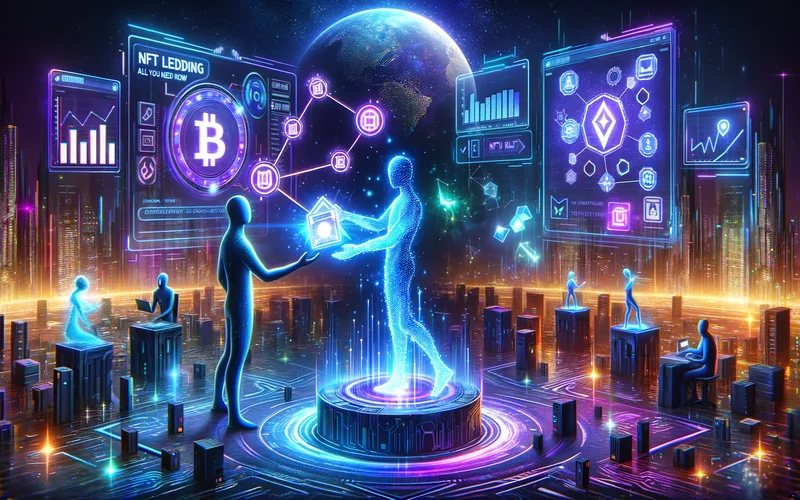At the heart of the multi-token NFT revolution are innovative blockchain protocols that enable the creation, management, and trade of multiple tokens under a single NFT umbrella. The most notable of these standards is ERC-1155, introduced on the Ethereum blockchain. Unlike its predecessors, ERC-721, known for powering individual NFTs, and ERC-20, the standard for fungible tokens, ERC-1155 blends the best of both worlds. This hybrid approach allows creators to issue both fungible (identical) and non-fungible (unique) assets within the same smart contract. It optimizes transaction and storage efficiency on the blockchain.

The Game-Changing Applications of Multi-Token Standards
- Digital Art and Collectibles
In the digital art world, multi-token standards open new avenues for creativity and interaction. Artists can now create collections that include both unique pieces (NFTs) and related, fungible assets (like digital prints) within a single framework. This not only simplifies the ownership and transfer process but also enriches the collector’s experience. It offers a more comprehensive view of an artist’s work.
- Gaming and Virtual Worlds
The gaming industry stands to benefit immensely from multi-token NFT standards. Game developers can utilize ERC-1155 to manage in-game assets, from unique character skins (non-fungible) to common items like currency or materials (fungible), all within a single token standard. This efficiency reduces the complexity of in-game economies. It enhances the player’s ability to manage and trade assets across different games and platforms.
- DeFi and Tokenized Real-World Assets
The versatility of multi-token standards also extends to decentralized finance (DeFi) and the tokenization of real-world assets. By allowing for the issuance of both fungible and non-fungible tokens, these standards facilitate a more nuanced representation of ownership and value. For instance, real estate property could be represented as a non-fungible token. Associated fungible tokens represent shares in the property’s income or value.
Navigating the Challenges and Opportunities
While the potential of multi-token NFT standards is immense, it’s not without its challenges. The complexity of managing multiple token types within a single contract requires careful consideration of security, interoperability, and user experience. Moreover, as the technology is relatively new, there’s a need for broader industry standards and best practices. These will ensure its potential can be fully realized.
However, the opportunities outweigh these challenges. Multi-token standards are paving the way for more dynamic and flexible digital economies, where assets can be more accurately represented, and ownership can be more granitely controlled and transferred. As these standards continue to evolve, we can expect to see even more innovative applications. These applications will stretch the boundaries of what’s possible with digital assets.
Preparing for a Multi-Token Future
For creators, developers, and investors looking to navigate the world of multi-token NFTs, staying informed about the latest developments in blockchain technology is crucial. It’s also important to keep abreast of smart contract standards. Participating in communities and platforms dedicated to NFT innovation can provide valuable insights and opportunities for collaboration.
For collectors and users, the rise of multi-token standards represents an opportunity to engage with digital assets in more complex and meaningful ways. Whether it’s by collecting multifaceted digital art or participating in richly detailed virtual economies, the multi-token approach offers a more nuanced and engaging experience. Additionally, investing in tokenized assets becomes more sophisticated with this approach.
Conclusion
The advent of multi-token NFT standards like ERC-1155 marks a significant milestone in the evolution of digital assets. By allowing for the creation of multiple tokens within a single NFT, these standards are unlocking new possibilities for creativity, efficiency, and interactivity. Across a wide range of industries, multi-token standards are reshaping the landscape of digital ownership and commerce. As we look to the future, their continued development and adoption will undoubtedly play a pivotal role. In this rapidly evolving space, the only limit is our imagination.
Disclaimer
FAQ
NFTs are unique digital assets stored on blockchains, representing various digital items.
To create a unique NFT, you mint it by uploading a digital file to a blockchain platform.
NFTs can be a good investment for collectors, but research and understanding risks are essential.


